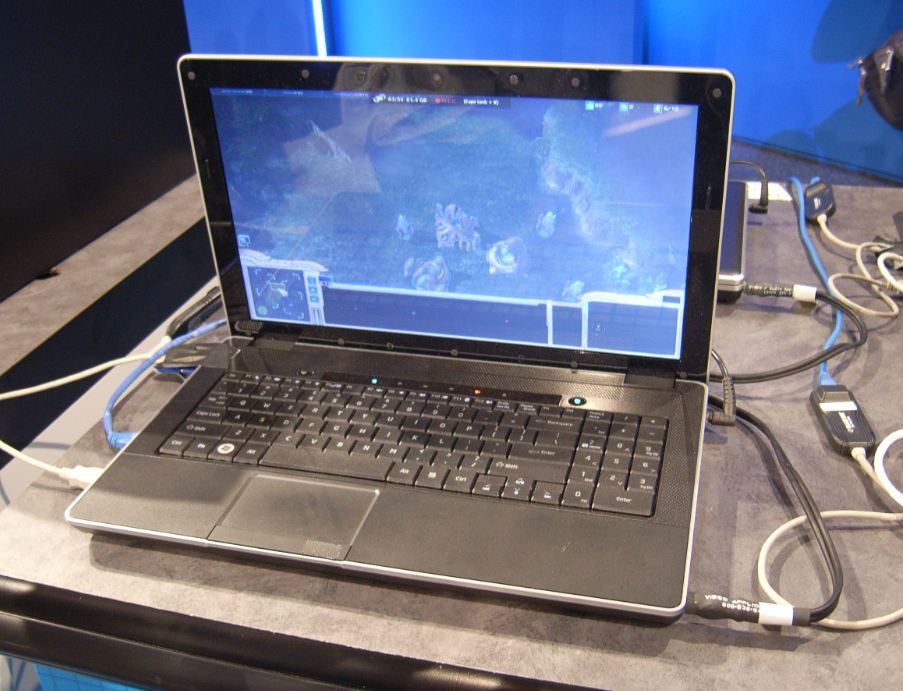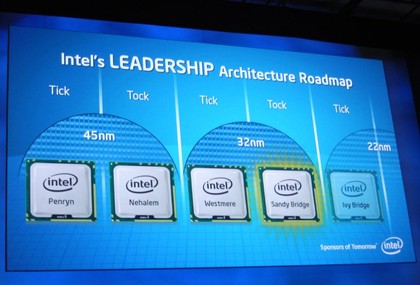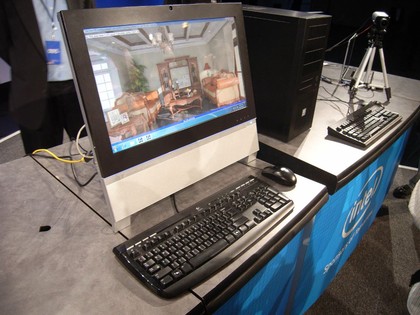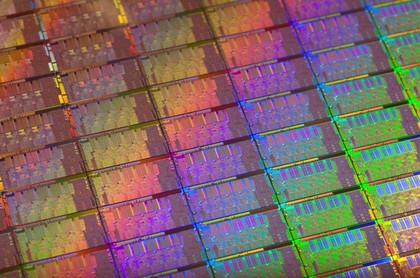New Intel chips encode HD video in 'seconds'
HD in "seconds rather than minutes" with Sandy Bridge

Intel has confirmed its new Sandy Bridge PC processors will pack a powerful hardware video transcode engine.
Dadi Perlmutter, Intel's all-round computer chip guru, demonstrated the new technology during the opening keynote at the Intel Developer Forum in San Francisco this morning.
For now, Intel isn't talking hard numbers regarding the performance of the new circuitry. However, the on-stage demo showed a Sandy Bridge chip encode a 1080p HD video clip in a matter of seconds.
Meanwhile, one of Intel's existing Core i7 chips, currently the fastest PC processors on the planet, was shown huffing and puffing for minutes over the same task. In other words, the new engine promises to be massively faster than encoding video on any previous PC processor.
Dedicated hardware
To find out more, TechRadar caught up with Intel's Josh Newman after the keynote. According to Newman, the transcode engine is part of the newly-integrated GPU core in Sandy Bridge. "The unit has both dedicated fixed functions for unchanging video codec standards and high bandwidth interaction with the execution array," Newman says.

In punter-friendly parlance, that means the transcode engine not only has specialised circuitry for decoding and encoding video. It also uses the graphics shaders in Sandy Bridge's new 3D core. Codec-wise, Newman confirms the engine will support the usual suspects including H.264, VC1 and MPEG2.
Get daily insight, inspiration and deals in your inbox
Sign up for breaking news, reviews, opinion, top tech deals, and more.
Newman says unleashing the engine's transcode capabilities will require new software support. Updates to key software including the Windows 7 operating system and popular video management software from the likes of Cyberlink are in the pipeline.
GPGPU a goner?
Of course, there's nothing new about hardware video decode acceleration in PC graphics cores. Even the cheapest and lowliest integrated graphics solutions for PCs already offer 2D decode capabilities. It's the hardware encode capability that's new.

Indeed, video encode is one of the very last PC applications that really stresses existing CPUs. It also just so happens to be one of the killer applications associated with general-purpose processing on graphics, a discipline sometimes known as GPGPU. Graphics specialist Nvidia in particular has been hyping the potential benefits of running video encode software on its GPUs for several years.
Intel is also making bullish claims about the 3D performance of the new graphics engine in Sandy Bridge. Combine that with GPGPU-bashing video encode engine and Nvidia could find itself even further marginalised as a niche player in high end 3D graphics. Meanwhile, even AMD's upcoming CPU-GPU fusion processor could be made to look a little old hat.
Look out for new dual and quad-core PC processors based on the Sandy Bridge architecture when they go on sale early next year.

Technology and cars. Increasingly the twain shall meet. Which is handy, because Jeremy (Twitter) is addicted to both. Long-time tech journalist, former editor of iCar magazine and incumbent car guru for T3 magazine, Jeremy reckons in-car technology is about to go thermonuclear. No, not exploding cars. That would be silly. And dangerous. But rather an explosive period of unprecedented innovation. Enjoy the ride.